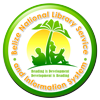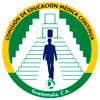Envenomation due to the bite of Latrodectus mactans or black widow spider in a pediatric patient
DOI:
https://doi.org/10.61997/bjm.v13i3.431Keywords:
Black widow spider, Envenomation, Spider biteAbstract
Background: Envenomation by the bite of Latrodectus mactans or black widow spider in children manifests clinically with high neurotoxicity. Clinical case: 10-year-old male patient, from a rural area, with a 4-hour history of having suffered a spider bite on the back of his right wrist while collecting firewood. He immediately presented intense pain at the site of the bite, chest and abdomen, up to generalized body pain; in addition, nausea, vomiting and bilateral periorbital edema. On physical examination, he also had tachycardia and tachypnea, although he was normotensive and afebrile, with inflammatory changes in the affected wrist, with the presence of a white spot and a hyperemic halo or target shooting injury. Leukocytosis, neutrophilia, lymphopenia was found, with renal and liver function tests without alterations. He was admitted for suspected poisoning from a Latrodectus mactans bite. The treatment was symptomatic and the antivenom monovalent anti-arachnid immunoglobulin was administered, although late due to hospital limitations. The clinical improvement was favorable, with no complications reported. Conclusions: Latrodectus mactans poisoning can produce a wide spectrum of clinical manifestations and alterations in laboratory tests secondary to the immune response, age and the amount of α-latrotoxin inoculated in relation to the proportion of the body surface, which could put at risk the patient's life. The authors recommend, if a pediatric patient is suspected of being poisoned by this arachnid, immediately refer them to an emergency department.
Downloads
References
Williams M, Sehgal N, Nappe TM. Black Widow Spider Toxicity. StatPearls. Treasure Island (FL): StatPearls Publishing; 2024. Disponible en: https://www.ncbi.nlm.nih.gov/books/NBK499987/
Peterson ME. Black widow spider envenomation. Clin Tech Small Anim Pract. 2006; 21(4):187-90. doi: https://doi.org/10.1053/j.ctsap.2006.10.003 DOI: https://doi.org/10.1053/j.ctsap.2006.10.003
Korbu S, Olika M, Alemayehu G. Latrodectus envenomation in Ethiopia. Int J Emerg Med. 2024; 17(1):1. doi: https://doi.org/10.1186/s12245-023-00576-z DOI: https://doi.org/10.1186/s12245-023-00576-z
Castro PHC, Paiva ALB, Peixoto GVM, Oliveira-Mendes BBR, Calaca P, Matavel A. Epidemiology of arthropods envenomation in Brazil: a public health issue. An Acad Bras Cienc. 2023; 95(suppl 1):e20220850. Disponible en: https://doi.org/10.1590/0001-3765202320220850 DOI: https://doi.org/10.1590/0001-3765202320220850
Emara AG, Aboshady AA, Aboshady OA, Shawqi MM. Reversible Myocarditis Following Black Widow Spider (Latrodectus spp.) Bite in Egypt: A case report. Sultan Qaboos Univ Med J. 2023;23(2):251-5. doi: https://doi.org/10.18295/squmj.2.2022.017 DOI: https://doi.org/10.18295/squmj.2.2022.017
Chen M, Blum D, Engelhard L, Raunser S, Wagner R, Gatsogiannis C. Molecular architecture of black widow spider neurotoxins. Nat Commun. 2021; 12(1):6956. doi: https://doi.org/10.1038/s41467-021-26562-8 DOI: https://doi.org/10.1038/s41467-021-26562-8
Sotelo-Cruz N, Gomez-Rivera N. [Neurotoxic manifestations of black widow spider envenomation in paediatric patients]. Neurologia. 2016;31(4):215-22. doi: https://doi.org/10.1016/j.nrl.2015.05.007 DOI: https://doi.org/10.1016/j.nrleng.2015.05.007
Piscopo A, Massari F, Scicchitano P, Sanasi M, De Palo M, Caldarola P, et al. Acute Myocarditis After Black Widow Spider Bite: A Case Report. Cardiol Ther. 2020;9(2):569-75. doi: https://doi.org/10.1007/s40119-020-00178-3 DOI: https://doi.org/10.1007/s40119-020-00178-3
Yilmaz M, Akcay G, Gurses D. Coexistence of Rhabdomyolysis, Myocarditis and Arrhythmia after Spider Bite: A Case Report. J Trop Pediatr. 2022;68(3). doi: https://doi.org/10.1093/tropej/fmac027 DOI: https://doi.org/10.1093/tropej/fmac027
Offerman SR, Daubert GP, Clark RF. The treatment of black widow spider envenomation with antivenin latrodectus mactans: a case series. Perm J. 2011;15(3):76-81. doi: https://doi.org/10.7812/tpp/10-136 DOI: https://doi.org/10.7812/TPP/10-136
Al Bshabshe A, Alfaifi M, Alsayed AF. Black widow spider bites experience from tertiary care center in Saudi Arabia. Avicenna J Med. 2017;7(2):51-3. doi: https://doi.org/10.4103/2231-0770.203606
Monte AA, Bucher-Bartelson B, Heard KJ. A US perspective of symptomatic Latrodectus spp. envenomation and treatment: a National Poison Data System review. Ann Pharmacother. 2011;45(12):1491-8. doi: https://doi.org/10.1345/aph.1q424 DOI: https://doi.org/10.1345/aph.1Q424
Downloads
Published
How to Cite
Issue
Section
License
Copyright (c) 2024 Gabriela Alejandra Flores Hernández, Scheybi Teresa Miralda Méndez

This work is licensed under a Creative Commons Attribution-NonCommercial 4.0 International License.
BJM protects Copyright at all times. However, it gives up part of the rights by displaying a Creative Commons License 4.0 (cc-by-nc), which allows the use of the work to share (copy and redistribute the material in any support or format) and adapt (transform and built from the material) as long as exclusive mention of the publication in the journal as the primary source is made. Under no circumstances, the work can be commercialized.













